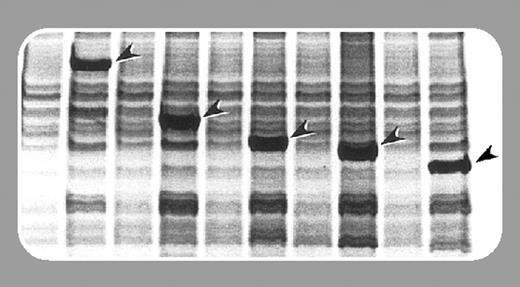Recognition that a deficiency in the metalloprotease ADAMTS-13 leads to thrombotic thrombocytopenic purpura (TTP) is an important development in understanding the pathogenesis of this disorder. The prevailing hypothesis on the pathogenesis of TTP centers on the conversion of ultra-large von Willebrand factor (UL-VWF) secreted from endothelial cells to a less-polymerized form in plasma by ADAMTS-13. A deficiency in ADAMTS-13 results in the accumulation of UL-VWF in circulation, which under high fluid shear spontaneously agglutinates platelets and forms thrombi. Deposition of these thrombi in the microcirculation is a characteristic feature of TTP. Several methods have been used to measure the activity of ADAMTS-13 in plasma. These methods are laborious, cumbersome, imprecise, or inaccurate. A rapid, accurate, and convenient assay for this enzyme that is suitable for routine clinical use, is critically needed.
In this issue, Kokame and colleagues (page 607) report that a peptide of 73 amino acids from the A2 domain of VWF, encompassing D1596 to R1668, is the minimal region that will serve as a substrate for ADAMTS-13 in vitro. This peptide substrate was specific for ADAMTS-13: no cleavage was detected with plasma samples from patients with congenital or acquired TTP, but the peptide was cleaved by normal plasma and plasma from patients with hemolytic uremic syndrome. Cleavage is dose dependent, sensitive to as low as 3% of normal plasma level. As shown in mixing studies, cleavage of this peptide was inhibited by plasma from acquired TTP patients, which contains circulating immunoglobulin inhibitors. Being derived from bacterial expression, this peptide substrate can be modified to carry N- and C-terminal tags that are useful for its purification and detection. This work by Kokame and coworkers has identified a suitable substrate and paves the way for the development of a much-needed clinical assay for ADAMTS-13.


This feature is available to Subscribers Only
Sign In or Create an Account Close Modal